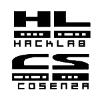AiutoSuModificaPagina > AiutoSuListe
 Questa pagina è d'aiuto se si sta lavorando con l'editor standard. Se si utilizza la modalità grafica si possono utilizzare diversi strumenti per ottenere lo stesso risultato (Consultare AiutoSuModificaPaginaModoGrafico). È possibile provare il tutto nella pagina CastelliDiSabbia.
Questa pagina è d'aiuto se si sta lavorando con l'editor standard. Se si utilizza la modalità grafica si possono utilizzare diversi strumenti per ottenere lo stesso risultato (Consultare AiutoSuModificaPaginaModoGrafico). È possibile provare il tutto nella pagina CastelliDiSabbia.
Aiuto su elenchi e rientri
È possibile creare degli elenchi in modo molto semplice. Tutto quello che bisogna fare è applicare un rientro di uno spazio alle righe che contengono gli elementi dell'elenco. Per concatenare elenchi su livelli differenti, è necessario utilizzare una diversa profondità di rientro. Tutti gli elementi allo stesso livello di rientro appartengono allo stesso (sotto-)elenco. Ciò significa anche che non si può modificare lo stile di un elenco una volta iniziato.
Indice
Rientri
È possibile far rientrare il testo di uno o più spazi. Ciò è particolarmente utile se si sta svolgendo una discussione su una pagina wiki e si vuole rendere visibile una specie di livello nella discussione.
Esempio:
Se si applica un rientra al testo in
questo modo, allora anche il risultato avrà un rientro.
Si possono ottenere livelli multipli di rientro.Viene visualizzato:
- Se si applica un rientra al testo in
- questo modo, allora anche il risultato avrà un rientro.
- Si possono ottenere livelli multipli di rientro.
- questo modo, allora anche il risultato avrà un rientro.
Elenchi non numerati
Per ottenere un elenco non numerato (puntato) utilizzare un asterisco * "*". Un elenco di oggetti può essere allineato nella formattazione wiki applicando un rientro alle righe aggiuntive allo stesso livello dell'asterisco iniziale (senza farle precedere da un asterisco). Per andare a capo all'interno di un elenco, basta inserire <<BR>> alla fine della parola dopo la quale si vuole andare a capo.
 Per ottenere un elenco non puntato basta sostituire l'asterisco con un punto "."1
Per ottenere un elenco non puntato basta sostituire l'asterisco con un punto "."1
Esempio:
* oggetto semplice questo viene mostrato sulla stessa riga * secondo livello * un altro oggetto semplice <<BR>> e qualcosa che viene mostrata a capo
Viene visualizzato:
- oggetto semplice questo viene mostrato sulla stessa riga
- secondo livello
un altro oggetto semplice
e qualcosa che viene mostrata a capo
Esempio:
. oggetto semplice non puntato (nessuno stile) . secondo livello
Viene visualizzato:
- oggetto semplice non puntato (nessuno stile)
- secondo livello
Elenchi numerati
Per ottenere un elenco numerato, basta partire con una maschera numerica, come "1.", "a.", "A.", "i." o "I.". Per far partire un elenco numerato da un certo valore, aggiungere "#valore" alla maschera numerica.
Esempi:
1. primo oggetto 1. secondo oggetto 1. secondo livello
Viene Visualizzato:
- primo oggetto
- secondo oggetto
- secondo livello
Elenchi di definizioni
Gli elenchi di definizioni possono essere creati da oggetti riportati in questa forma:
<spazio>termine:: definizione
 Notare che il termine non può, per il momento, contenere formattazione wiki.
Notare che il termine non può, per il momento, contenere formattazione wiki.
 Gli elenchi di definizioni vengono utilizzati anche nei dizionari (Consultare AiutoSuDizionari).
Gli elenchi di definizioni vengono utilizzati anche nei dizionari (Consultare AiutoSuDizionari).
Esempio:
termine:: definizione un altro termine:: e la sua definizione
Viene Visualizzato:
- termine
- definizione
- un altro termine
- e la sua definizione
Sezioni numerate
Sempre in relazione agli elenchi, ma comunque differente, è la possibilità di numerare i titoli dei capitoli. È possibile farlo aggiungendo un'istruzione di processo #pragma all'inizio della pagina. Aggiungere
#pragma section-numbers on
all'inizio della pagina e i titoli dei capitoli verranno numerati partendo da 1 (i paragrafi verranno numerati come 1.1, 1.2 e così via)
 Per ulteriori informazioni, consultare AiutoSuIstruzioniDiProcesso
Per ulteriori informazioni, consultare AiutoSuIstruzioniDiProcesso
Altri esempi
Un elenco numerato, misto a elementi puntati:
1. uno
1. due
1. uno
* punto 1
* punto 2
1. due
1. tre
* punto
1. uno
Varietà di elenchi numerati:
* Romano minuscolo
i. uno
i. due
* Romano maiuscolo (parte dal numero 42)
I.#42 quaranta-due
I. quaranta-tre
* Alfabetico minuscolo
a. uno
a. due
* Alfabetico maiuscolo
A. uno
A. due
Vengono visualizzati
Un elenco numerato, misto a elementi puntati:
- uno
- due
- uno
- punto 1
- punto 2
- due
- uno
- tre
- punto
- uno
- punto
Varietà di elenchi numerati:
- Romano minuscolo
- uno
- due
- Romano maiuscolo (parte dal numero 42)
- quaranta-due
- quaranta-tre
- Alfabetico minuscolo
- uno
- due
- Alfabetico maiuscolo
- uno
- due
Per ulteriori informazioni sulle formattazioni possibili, consultare AiutoSuModificaPagina
Per chi ha familiarità con i CSS: Questo equivale a "list-style-type: none" (1)








